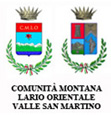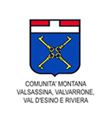From Delebio to Andalo Valtellino and Rogolo
A power plant marks the start of Delebio. Here you can turn left to the town and the railway station, or right, passing alongside the palazzo Bassi, with 19th-century aristocratic architecture which combined a residential function and a factory. The Bassi family was a forerunner in the local economic activity. Then, walk to the edge of the Val Lesina crossed by a stone bridge alongside a dam in the stream, which is always full of water. The easy availability of water meant that Delebio has developed mils, blacksmiths, sawmills, and even a silk factory (in the 18th century) taking on a significant economic role since the 15th century.
After the bridge over the Lesina, the route passes through the hamlet of Torazza and enters the village of Andalo on the old Via Pedemonte, along which the historic centre is arranged, leaning up against the slope. Here you can see some nicely-restored buildings with wooden loggias.
The front of the parish church is a good place to take a break. If it is open, it is worth looking round, because of the oval painting by Pietro Ligari that it contains showing the Virgin Mary with Child, an image which is also used on the frescoes which decorate the old country houses nearby. Pietro Ligari is one of the most well-renowned artists of the area, born in Sondrio in 1686. Continue along Via Superiore. This leads up the slope via a ramp which soon turns into a pathway. It continues straight up to a height of 300m before entering the territory of Rogolo.
At the Ronco lodges (elevation 302m) you will reach the local road towards Piazzo and Fistolera. From here, continue towards the valley along a nice cobbled section which was used to consolidate the structure of the path and gives it a concave form to allow bundles of wood to be sent downhill.





























